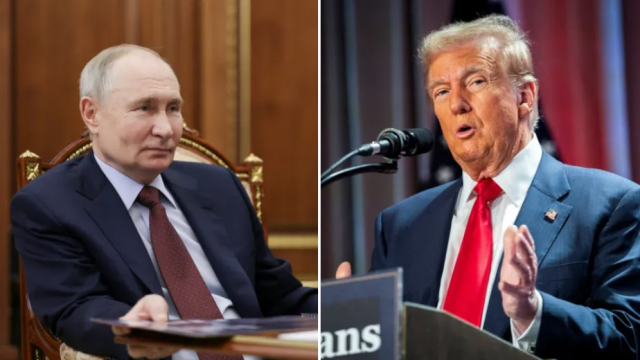WASHINGTON, DC – Today marks the fourth anniversary of president Joe Biden’s “America is Back” speech. The first foreign policy address of his presidency, it was made at the 2021 Munich Security Conference where, after President Donald Trump’s first term in office, Biden proclaimed that “the transatlantic alliance is back. And we are not looking backward. We are looking forward together”.
What a difference four years makes, especially in Munich where Vice President JD Vance’s speech last Friday excoriated Europe, flirted with the continent’s far-right political parties, and quite possibly sounded the death knell for US security guarantees that have kept the peace for 80 years.
Sir Keir Starmer will head to Washington next week for face-to-face talks with Trump that may be the most consequential discussions between the two countries since 1945. They are talks that are also now fraught with risk, after the Prime Minister’s warning that the UK faces a “once-in-a-generation moment for our national security”. While he declares himself “ready and willing” to deploy UK forces in Ukraine to “guarantee the security of our continent and the security of our country”, he will be meeting a US President who is not even ready to include Ukraine, much less European nations, at the negotiating table.
Vance’s speech has galvanised Europe, spreading the belated realisation that the United States may need to be treated as an adversary, and no longer an ally committed to protecting the UK and its neighbours in the face of future Russian aggression.
Many European leaders have long feared this day might dawn. Just hours after Biden’s 2021 speech ended, French president Emanuel Macron – dubious about the Democratic Party’s capacity to derail Trump and his Make America Great Again movement permanently – warned that Europe should begin engaging in “strategic autonomy”, moving gently away from the US orbit. Then German chancellor Angela Merkel also sounded a note of caution, warning that Europe’s interests with Washington “will not always converge”.
“Always” didn’t even last a full four years.
While Biden undoubtedly played a blinder keeping America’s Nato partners united around the need to support Ukraine, in other ways he was a deeply unreliable ally. The botched US military withdrawal from Afghanistan in August 2021 shocked European leaders, both with the scale of its incompetence and the speed with which it permitted the Taliban to retake power.
Biden’s increasingly protectionist trade policies alarmed successive UK prime ministers who saw hopes of a post-Brexit US-UK trade deal evaporate in front of their eyes.
And in 2021, Biden enraged Macron by cutting France out of a lucrative defence deal to provide Australia with nuclear-powered submarines. Biden apologised, acknowledging that he had been “clumsy”, insisting France remained “an extremely valued partner”, notwithstanding his own administration’s untrustworthy behaviour.
Every single day since those 2021 warnings were articulated, valuable time has been frittered away preparing for a putative crisis that now seems increasingly real.
The fresh chapter in the transatlantic relationship has already witnessed a sea change in Washington’s approach. Some observers believe that Trump’s new insistence that Nato members must spend 5 per cent of their GDP on defence expenditure (not the 2.5 per cent he previously demanded) is the beginning of the end of Article 5, the mutual defence covenant that lies at the heart of the alliance.
One former US administration official told The i Paper that Trump was holding European security to ransom. “Article 5 is now Article 5 per cent. Pay up or else,” the former official warned. Others argue that Trump will destroy Nato not by withdrawing from the alliance, but by incrementally demanding ever-increasing amounts of defence expenditure by its member states.
European capitals will now be tested by the speed with which they must adjust their thinking, and by the urgent need to pour money into defence procurement before Russian president Vladimir Putin brings his army home from Ukraine and invades Lithuania, Latvia or Estonia next. Some military analysts argue that a mere six months after Russian troops arrive back home, the Kremlin could be ready to deploy them once again.
Starmer warned on Sunday that “the end of this war, whenever it comes, cannot merely become a temporary pause before Putin attacks again”. He will face an uphill battle persuading Trump that Putin is an untrustworthy interlocutor, or a territorial threat to Nato members. Starmer will also have to work overtime to stress that when the Kremlin leader says he wants to settle not only the conflict, but also “the reasons for the conflict”, that is code for pushing Nato forces back from Russia’s borders so that they can no longer contain him.
A mere month after Trump’s inauguration, Nato is imperilled in ways that – just a few, short weeks ago – seemed unimaginable. The Kremlin today appears to enjoy a closer ally on Pennsylvania Avenue than the UK and its European neighbours. It may be time finally to retire all talk of a “special relationship” between the White House and No 10.





Comments
Leave a Comment